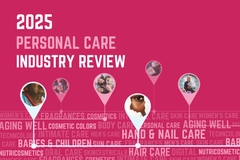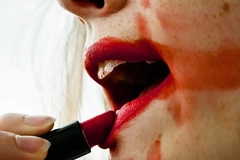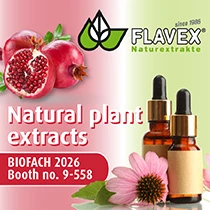Oat plantlets sap and mandarin extract cream restores rosacea impacted skin barrier, study finds

12 Jul 2022 --- A newly developed organic skincare cream containing Rhealba oat plantlet protein-free sap and mandarin extract has been found to restore the skin barrier within four weeks, reduce transepidermal water loss and erythema (redness) for rosacea skin, finds France-based researchers.
The A-Derma facial cream was developed and researched by Pierre Fabre Dermo-Cosmétique.
The cream was “very well-tolerated” by the 105 participants with various rosacea phenotypes. It may also be beneficial for rosacea subjects in adjunct to dermatological procedures and therapies, the researchers suggest. In 12 subjects, the product only induced very mild to mild signs of skin reactivity, such as burning or stinging and mild-to-moderate transient erythema.  The cream “significantly” decreased skin tightness and discomfort, increased skin pH, and respected the microbiota.
The cream “significantly” decreased skin tightness and discomfort, increased skin pH, and respected the microbiota.
Additionally, 93% of the participants who had undergone a superficial dermatological procedure for erythematotelangiectatic rosacea or were taking treatments for papulopustular rosacea rated with cream as “very good” (8/10) and said it further relieved their symptoms.
According to the researchers, rosacea is a persistent inflammatory disease on the facial skin and can be noticed by centro-facial erythema. Current therapies combine treatments using skincare products to prevent flare-up triggers.
Avoiding rosacea blooms
The researchers explain that the complex condition occurs due to a dysregulation of immunity, increased Demodex mites, neurovascular changes and skin barrier impairment.
Rosacea flare-ups can be triggered by ultraviolet radiation, temperature changes, hot drinks and spicy food.
Treatments vary depending on clinical signs and symptoms. “Topical alpha agonists (e.g., brimonidine and oxymetazoline) target neurovascular dysregulation, anti-inflammatory treatments target perilesional erythema, and mechanical therapies – involving potassium titanyl phosphate lasers or intense pulsed light therapy – target telangiectasia and persistent erythema,” the study outlines.
Hence, dermo-cosmetic products such as moisturizers and sunscreen become necessary to enable daily management of the skin barrier to prevent rosacea-induced disruptions.
Improved skin quality
Subjects with erythematotelangiectatic rosacea experienced a reduced clinical severity of erythema, with improvement in the redness phenotype, which may have been the effects of the anti-inflammatory properties of mandarin extracts.
Multiple researchers have suggested that citrus waste can be used in cosmetics due to its valuable bioactive compounds and phytochemicals. Researchers in India also offer various upcycling opportunities to industry from citrus peels, seeds and pomace. Rosacea flare-ups can be triggered by ultraviolet radiation, temperature changes, hot drinks and spicy food.
Rosacea flare-ups can be triggered by ultraviolet radiation, temperature changes, hot drinks and spicy food.
Moreover, the researchers say that the cream “significantly” decreased skin tightness and discomfort, increased skin pH, and respected the microbiota.
The researchers carried out three clinical studies on subjects aged 18 to 70 with a skin phototype of I to III (Fitzpatrick scale) and various rosacea phenotypes (erythematotelangiectatic or papulopustular).
Subjects applied the product twice per day on the face and neck for four weeks.
By Venya Patel












